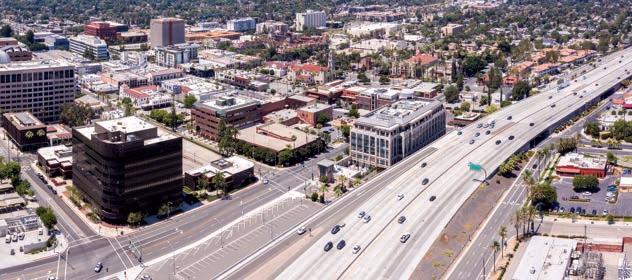

PROPOSED ANNUAL BUDGET
FISCAL YEAR 2024 - 2025
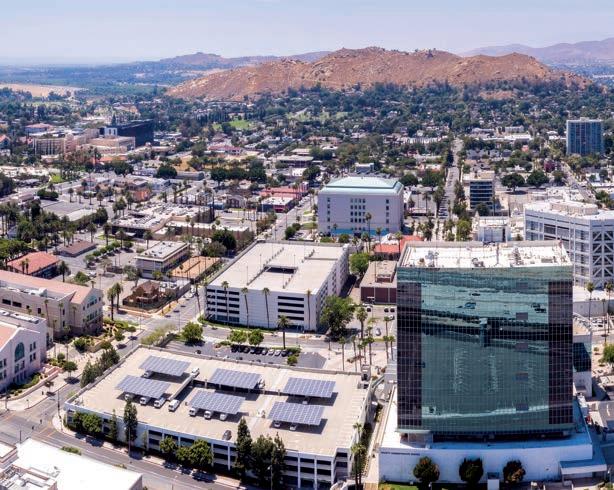
MEMBER AGENCIES
• City of Banning
• City of Beaumont
• City of Calimesa
• City of Canyon Lake
• City of Corona
• City of Eastvale
• City of Hemet
• City of Jurupa Valley
• City of Lake Elsinore
• City of Menifee
• City of Moreno Valley
• City of Murrieta
• City of Norco
WESTERN RIVERSIDE COUNTY
• City of Perris
• City of Riverside
• City of San Jacinto
• City of Temecula
• City of Wildomar
• County of Riverside
• Eastern Municipal Water District
• Western Water
• Riverside County Superintendent of Schools (ex-officio)
GENERAL ASSEMBLY AND EXECUTIVE COMMITTEE MEMBERS
GENERAL ASSEMBLY MEMBERS

City of Banning
Sheri Flynn, Alberto Sanchez, Colleen Wallace, David Happe, Rick Minjares

City of Beaumont
Mike Lara, David Fenn, Julio Martinez III, Jessica Voigt, Lloyd White
City of Calimesa
Wendy Hewitt, Bill Davis, John Manly, Linda Molina, Jeff Cervantez

City of Canyon Lake
Mark Terry, Dale Welty, Kasey Castillo, Jennifer Dain, Jeremy Smith

City of Corona
Jacque Casillas, Tom Richins, Jim Steiner, Wes Speake, Tony Daddario
EXECUTIVE COMMITTEE MEMBERS





Councilmember Sheri Flynn
Mayor Pro Tem Mike Lara
Mayor Pro Tem Wendy Hewitt
Mayor Pro Tem Mark Terry
Councilmember Jacque Casillas
City of Eastvale
Christian Dinco, Michael McMinn, Clint Lorimore, Todd Rigby, Jocelyn Yow

City of Hemet
Jackie Peterson, Joe Males, Carole Kendrick, Linda Krupa, Malcolm Lilienthal, Jr.

City of Jurupa Valley
Chris Barajas, Guillermo Silva
Brian Berkson, Leslie Altamirano, Armando Carmona
City of Lake Elsinore
Brian Tisdale, Steve Manos, Bob Magee, Natasha Johnson, Tim Sheridan
City of Menifee
Bob Karwin, Bill Zimmerman, Dean Deines, Ricky Estrada, Lesa Sobek
City of Moreno Valley
Elena Baca-Santa Cruz, Ulises Cabrera, Cheylynda Barnard, Edward Delgado






Mayor Christian Dinco
Mayor Pro Tem Jackie Peterson
Councilmember Chris Barajas, Chair
Mayor Pro Tem Brian Tisdale
Councilmember Bob Karwin
Councilmember Elena Baca –Santa Cruz
City of Murrieta
Lisa DeForest, Ron Holliday, Lori Stone, Jon Levell, Cindy Warren

City of Norco
Kevin Bash, Greg Newton, Katherine Aleman, Robin Grundmeyer, Berwin Hanna

City of Perris
Rita Rogers, Michael Vargas, Malcolm Corona, David Starr Rabb, Marisela Nava

City of Riverside
Steven Robillard, Patricia Lock Dawson, Philip Falcone, Clarissa Cervantes, Chuck Conder, Sean Mill, Jim Perry, Steve Hemenway

City of San Jacinto
Crystal Ruiz, Phil Ayala, Valerie Vandever, Brian Hawkins, Alonso Ledezma

City of Temecula
James Stewart, Brenden Kalfus, Zak Schwank, Jessica Alexander






Councilmember Lisa DeForest
Mayor Kevin Bash
Councilmember Rita Rogers, Vice-Chair
Councilmember Chuck Conder
Councilmember Crystal Ruiz, Immediate Past-Chair
Mayor James Stewart

City of Wildomar
Joseph Morabito, Bridgette Moore, Ashlee DePhillippo, Dustin Nigg, Carlos Marquez

County of Riverside
Kevin Jeffries, Karen Spiegel, Chuck Washington, V. Manuel Perez





Eastern Municipal Water District
Phil Paule, David Slawson, Stephen Corona, Randy Record, Jeffrey Armstrong

Councilmember Joseph Morabito
District 1
Supervisor Kevin Jeffries
District 2
Supervisor Karen Spiegel
District 3
Supervisor Chuck Washington
District 5
Supervisor Yxstian Gutierrez
EMWD Board President Phil Paule
Western Water
Brenda Dennstedt, Mike Gardner, Fauzia Rizvi, Gracie Torres, Laura Roughton
Riverside County Office of Education


Director Brenda Dennstedt 2nd Vice-Chair
Riverside County Superintendent of Schools Dr. Edwin Gomez (ex-officio)
WESTERN RIVERSIDE COUNCIL OF GOVERNMENTS
VISION, GUIDING PRINCIPLES AND CORE VALUES
GUIDING PRINCIPLES
STAY TRUE TO WRCOG’S MISSION | Maximize value to member agencies by prioritizing resources to support issues of mutual concern that are consistent with our core mission.
PRIORITIZE FAIRNESS | Strive for an environment in which each member agency’s voice is heard and respected, and employees work in an environment where they feel safe, protected, and valued.
EARN PUBLIC TRUST | Respect the obligations and responsibilities of handling the public’s business by maximizing transparency, incorporating industry best practices, and representing the interests of the people we serve.
THINK WITH A LONG-TERM FOCUS | Evaluate programs through a holistic and long-term lens that protects the general fund by mitigating unintended consequences, protecting the WRCOG brand, and striking a responsible balance between innovation and risk.
MISSION
The Mission of the Western Riverside Council of Governments is to facilitate, plan, and identify funding opportunities for critical infrastructure projects and implement regionally-significant programs that benefit its member agencies and the communities they serve. MISSION,
VISION
The Western Riverside Council of Governments provides a strong regional voice representing the interests of its member agencies, securing funding, and facilitating investments in transportation and infrastructure to ensure a sustainable, safe, and economically strong region.
CORE VALUES


BUDGET MESSAGE
Members of the Western Riverside Council of Governments General Assembly:
On behalf of the entire WRCOG team, I’m pleased to present the proposed FY 2024/2025 budget for your consideration. It represents a balanced spending plan guided by the priorities set forth by the Executive Committee. I’d like to thank the committee members for providing clear policylevel guidance to inform this spending plan, the fiscal staff for their technical expertise, and the departmental staff for their commitment to being good stewards of public funds.
While minimal year over year changes are proposed, the document is prepared with a longterm lens that prioritizes fiscal responsibility, high service levels that maximize value to member agencies, and reflects the newly adopted guiding principles:
1. Stay true to our mission
2. Prioritize fairness
3. Earn public trust
4. Think with a long-term focus.
In planning for the upcoming fiscal year, we acknowledge that our local economy is connected to the broader global and national economic landscapes. The State budget, in particular, is in a weakened state with a growing deficit. Historically, the State’s budget solutions tend to impact local budgets in unpredictable ways. Although we’re unable to predict each of the factors that influence our future financial picture, we’ve leveraged the available economic and political information to mitigate potential risks and make realistic estimates to benefit members while protecting the agency’s long-term fiscal health.
The proposed budget provides funding to accomplish the goals outlined in the Strategic Plan:
1. Serve as an advocate at the regional, state, and federal level for the Western Riverside County subregion.
2. Identify and help secure grants and other potential funding opportunities for projects and programs that benefit member agencies.
3. Ensure fiscal solvency and stability of the Western Riverside Council of Governments.
4. Communicate proactively about the role and activities of the Council of Governments.
5. Develop projects and programs that improve infrastructure and sustainable development in our subregion.
6. Develop and implement programs that suppor t resilience for our region.
7. Provide a safe, inclusive environment that values employees.
SUMMARY
The agencywide budget includes revenues and expenditures of $20,449,609 and $19,815,397 respectively. This excludes the Riverside County Habitat Conservation Agency (RCHCA) whose budget is managed by WRCOG but remains a separate entity. It also excludes the passthrough funds from the Transportation Uniform Mitigation Fee (TUMF) which amount to 96% of the collected funds.
The General Fund revenues and expenditures are $7,343,207 and $6,747,514 respectively with a healthy fund balance of $11.4 million (169% of annual General Fund expenditures). This amount protects against the volatile nature of programmatic revenues that comprise the General Fund.
Retirement costs have stabilized in recent years and are on a more predictable path. The Unfunded Accrued Liability (UAL) is $132,000 (87.5% funded) for PEPRA employees and $3.9M (72.7% funded) for Classic employees. This is offset by a 115 Trust balance of $337k. The Other Post Employment Benefit (OPEB) liability is $2.2M (43% funded).
YEAR-YEAR ADJUSTMENTS
The Executive Committee has emphasized the importance of transparency and easy comprehension of how public funds are collected and spent. Last Fiscal Year, the Executive, Administrative and Fiscal Functions were separated. In furtherance of that, The Streetlights, Solid Waste, and Love Your Neighborhood Programs that were previously under the General Fund will be broken out into their own separate funds for greater transparency. Additionally, the PACE Commercial and HERO Programs will have assigned fund balances within the General Fund.
No new programs are proposed and one program has been removed from this budget. The Regional Early Access Program (REAP) 2.0 was originally budgeted as a $1.6 million grant from the State in order to support integrated housing and climate goals. Those funds were frozen and proposed to be rescinded as part of the State’s budget solution. While recent action has been encouraging, the final State action remains uncertain. Consequently, those funds are not included in this budget.
One of our newer programs is the Inland Regional Energy Network (I-REN). It is a collaborative effort with the other Councils of Governments serving Riverside and San Bernardino Counties. Consistent with the predicted ramp up of the program, this budget funds three new positions totaling $300,000 to support administrative functions, advocacy and outreach, and programmatic functions. The positions are consistent with the approved governing documents and plans for I-REN and are fully funded by the California Public Utilities Commission.
FOCUS AREAS
While many programs remain static from the previous year, there are nine areas of particular attention in this budget.
Member Dues
A core agency revenue is member dues. They are collected based on a formula and amount that has remained unchanged for an extended period of time. The Executive Committee has tasked the Technical Advisory Committee with evaluating the structure and amount of those fees. That process is underway and proposed changes are anticipated at a future time. The current fee structure calls for a proportional fee based on a combination of population and assessed value. While the cumulative revenue from member dues remains unchanged at $294,410, the proportional distribution has been updated to reflect current population and assessed value data.
Clean Cities
The Clean Cities Program is a partnership with the US Department of Energy. The program continues to work toward closing a long-standing structural funding gap and the budget includes an increase in member dues (paid by agencies that opt into the Program) by an average of $2,310 per agency.
Fellowship
The Fellowship Program has successfully retained local talent by pairing recent graduates with public agency employers. It is funded through a combination of contributions from member agencies and WRCOG funds that operate similar to a wasting endowment. No new WRCOG funding source has been identified so, in order to prolong the program life, fewer Fellows have been included in the annual program. This has extended the program life but, the effects have been dampened by market changes that resulted in a wage increase for participating Fellows. In a future year, the program will lack funds to continue in its current form.
HERO
The HERO (residential PACE) Program continues it’s years-long wind down process where revenue declines outpace expenditure declines on an annual basis. This results in a negative net annual activity that is offset by decreasing Program expenditures and fund balance transfers. The HERO Program’s fund balance has been separately assigned from the General Fund’s unassigned fund balance as well as the Commercial PACE Program’s fund balance in order to more clearly identify financial transactions related to the Program
Inland Regional Energy Network (I-REN)
The Inland Regional Energy Network (I-REN) continues to grow toward full capacity. While Program spending ramps up, the revenues are adjusted to account for the gradual increase. Program revenues are allocated by the California Public Utilities Commission with a fixed number of $65M spread over a six-year period. Slower spending in the early years are planned to be offset by higher spending in the out years with the goal of spending all available funds within the authorization period.
Cost of Living Adjustment
The Consumer Price Index (CPI) for the area reflects an inflation rate of 4.7%. The proposed Cost of Living Adjustment (COLA) for staff of 4% reflects current CPI and the Agency’s ability to pay. No COLA was provided during the last budget cycle.
Streetlights Program
The Streetlights Program includes a revenue decrease to reflect the exit of one participating agency. The expenditures are adjusted accordingly with the bulk of the spending allocated to the contractor performing maintenance services.
Used Oil Program
The Used Oil Program is public-facing program that continues to be popular and well-received by members of the public. The state funding source for this Program, the California Department of Resources and Recycling Recovery (CalRecycle), has largely declined or remained static in recent years while the costs associated with administering the Program have risen. While this does not cause an immediate threat to the Program, this will likely be a point of discussion in future years.
Transportation Uniform Mitigation Fee (TUMF) Program
The Transportation Uniform Mitigation Fee (TUMF) Program continues to outpace expectations with strong revenues. Similar to the revised estimate for the current year, revenues are budgeted at $70 million (4% revenue and 96% passthrough). The most recent nexus study process is underway. When completed, that process will inform a decision about any changes to the current fee and consequently revenues. The amounts and timing of any changes will be determined at a later date and are not reflected in this budget.
Conclusion
WRCOG is proud to be in a strong financial position and has taken appropriate steps to mitigate future risks and further strengthen that position to withstand future changes to the local economy or programs. The possibility of fiscal disruption from a recession, political shift, or even another pandemic, remains on the forefront of fiscal decision-making for the agency. While change is inevitable, the policymakers have positioned the agency to add value to our member agencies even in the midst of that change.

BUDGET SCHEDULE
Date Activity
December 2023 – February 2024
February 15, 2024
February 22, 2024
March 13, 2024
April 1, 2024
June 20, 2024
Budget planning, staffing allocations, position requests, revenue and expenditure estimates.
Technical Advisory Committee: Overview and key issue advisory on focus area topics.
Finance Director’s Committee: Overview and key issue advisory on focus area topics.
Administration & Finance Committee: Overview and key issue advisor y. Present draft revenues and expenditures.
Executive Committee: Detailed discussion on revenues, expenditures, budget resolution, recommendation to General Assembly
General Assembly: Budget adoption
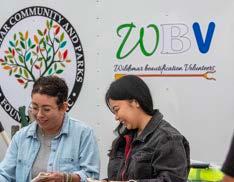

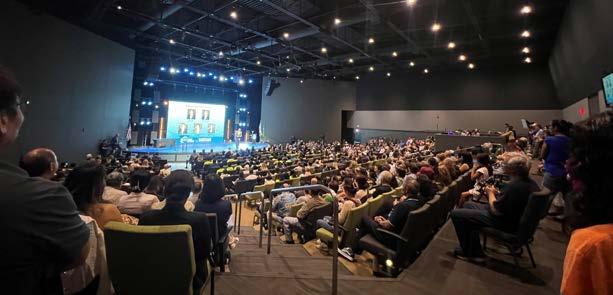
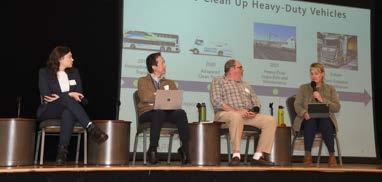

WRCOG ORGANIZATION
WRCOG Board of Directors
General Assembly
108 Elected Officials from 21 Member Agencies
WRCOG Supporting Foundation
Executive Committee members
Technical Advisory Committee (TAC)
Executive Managers from each member agency
Finance
Planning
Public Works
Solid Waste
TUMF Zones TAC
Executive Committee
25 Members elected by each member agency
Admin and Finance Committee
11 members of the Executive Committee
Transportation Uniform Mitigation Fee (TUMF)
One representative from each City and County in the Zone
Executive Director
Transportation and Planning Department
Inland Regional Energy Network (IREN)
3 members of the WRCOG Executive Committee
3 members of the SBCTA
3 members of the CVAG
Energy and Environmental Department
Administrative Services Department Finance Department
Riverside County Habitat Conservation Agency (RCHCA)

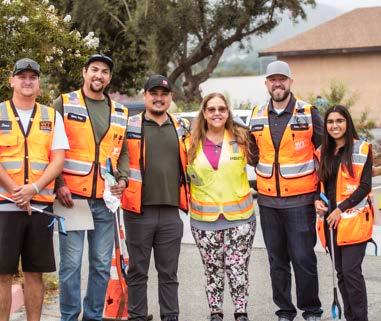
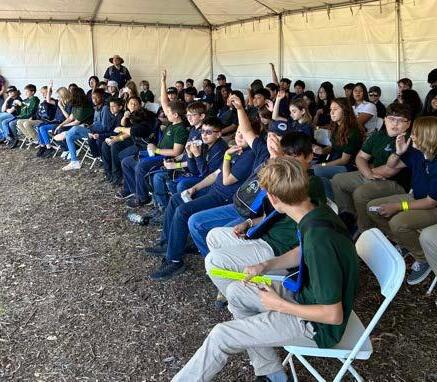
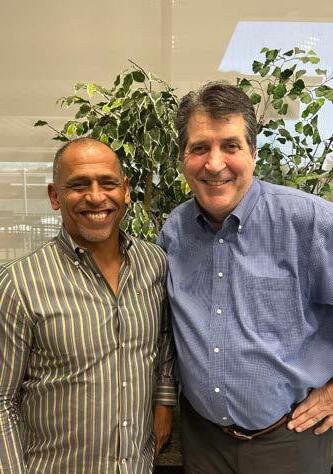
PERSONNEL LISTING BY DEPARTMENT
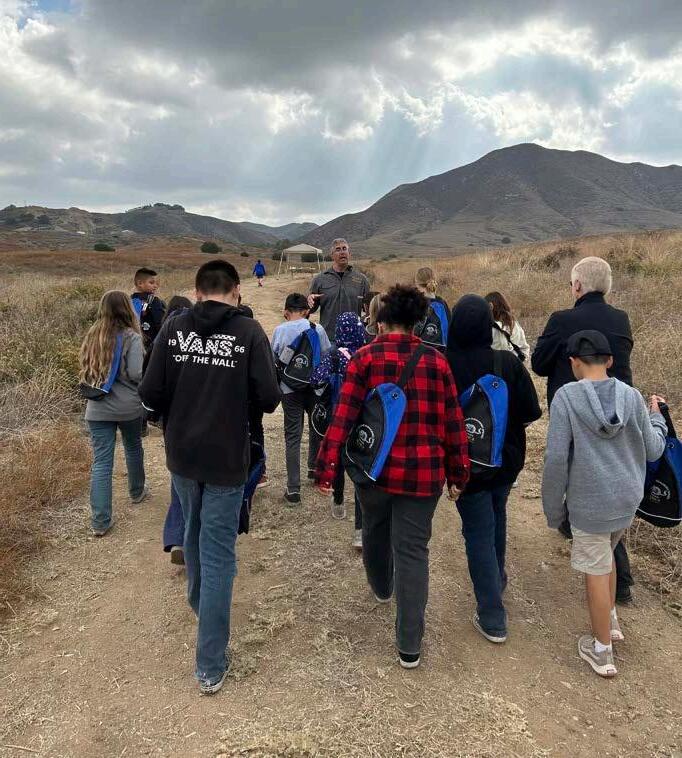
BUDGET NARRATIVE SUMMARY
Discussion of Budget Policies and Processes
WRCOG is a Joint Powers Authority (JPA), consisting of the County of Riverside, 18 cities, two regional water districts, March JPA, and the Riverside County Superintendent of Schools. Its actions and activities are guided by its members. Recognizing that issues related to growth are not constrained by city or county boundaries, WRCOG focuses on a number of regional matters important to the future of Western Riverside County. By working together through its committee structure and utilizing existing resources, WRCOG is cost-effective by reducing duplication of effort, sharing information, enabling strong advocacy, and strengthening Western Riverside County’s standing regionally and statewide. WRCOG’s program areas are varied and range from transportation to air quality, solid waste, environment, energy, resiliency, sustainability, and growth.
The JPA (originally established April 1, 1991; as amended November 1, 2021) establishes the form of the Agency and calls for the Executive Director to annually prepare and present a proposed budget to the Executive Committee and General Assembly. This Agreement sets the fiscal year as July 1 through June 30. Prior to the beginning of each fiscal year, the General Assembly is required to adopt a final budget for the revenues and expenditures of WRCOG during the following fiscal year.
WRCOG Bylaws (Resolution Number 25-21, approved November 1, 2021) provide further details regarding the annual budget. The Administration & Finance Committee provides budget and finance oversight for WRCOG. Budget control levels determine the parameters for administrative budget transfers and amendments. Upon adoption of the resolution for the Fiscal Year 2024/2025, budget control levels will be established by department within the General Fund and by Fund within all other funds.
Consistent with the JPA agreement, the Bylaws require the Executive Director to annually prepare and present a proposed budget to the Executive Committee and General Assembly. Further, the Executive Director is authorized to contract and execute on behalf of WRCOG contracts that are related to purposes contained in the approved annual budget and subject to established expenditure authority.
Budget Narrative by Fund / Program
FY 2024/2025 Budget Summary by fund
General Fund revenues and transfers in (overhead) are anticipated to be $7,343,207 against $6,747,514 in expenditures, a difference of $595,693. This difference is primarily due to the TUMF and HERO Program budgets.
Clean Cities Fund revenues are anticipated to be $491,120 against $487,629 in expenditures.
Used Oil Fund revenues are anticipated to be $201,267 against $201,267 in expenditures.
I-REN Fund revenues are anticipated to be $10,510,797 against $10,510,797 in expenditures. The I-REN’s budget is $65M over a six-year budget period, where funds can be rolled into subsequent years if they are not spent in earlier years, as long as it’s within the six-year Program period.
LTF revenues are anticipated to be $1,278,750 against $1,278,750 in expenditures.
For FY 2024/2025, the total Agency budgeted revenues and transfers in (overhead) are anticipated to be $20,449,609 against $19,815,397 in expenditures, a difference of $634,212.
Compared to FY 2023/2024, this represents an increase of approximately 2.9% in revenues and 7.9% in expenditures. This is primarily attributable to the increase in I-REN activity, decreased HERO activity, and increase in activity related to the ICARP grant.
The Regional Streetlight Program, now in its maintenance phase, coordinates service contracts between entities and provides support on an as-needed basis to participating member jurisdictions. Revenue is relatively fixed with a 3% annual increase included in the agreements with member jurisdictions. Streetlights Fund revenues are anticipated to be $131,417 against $115,847 in expenditures.
The Solid Waste Program has an anticipated budget of $493k in revenues and expenditures, a decrease of approximately $63k compared to FY 2023/2024. This decrease is due to one-time revenues received for SB 1383 capacity planning in FY 2022/2023. Anticipated expenditures will be approximately $474k. Additionally, the Love Your Neighborhood Program, previously included as a separate budget, will now be merged under Solid Waste. Solid Waste Fund revenues are anticipated to be $493,051 against $473,592 in expenditures.
Energy and Environmental Programs
C-PACE:
The Commercial Property Assessed Clean Energy (C-PACE) Program is currently limited to one provider: Nuveen Green Capital (formerly known as Greenworks). In previous years, the revenues and expenditures were estimated in a similar manner as other programs –predicting the revenue level, then constraining expenses accordingly. Program revenues are the result of completed projects with one of the two providers. Projects happen at unpredictable intervals which makes estimating revenues more difficult and typically requires mid-year budget adjustments to reflect actual activity. With the exception of a fixed cost ($334k), the PACE expenses increase and decrease in concert with revenue increases and decreases.
In Fiscal year 23/24, three C-PACE projects were closed with a C-PACE financing amount of $38,841,961. These projects included one solar retro fit project in the city of Carlsbad, and two new construction projects that included energy, water and seismic improvements the cities of El Centro and Sand City.
SoCalGas Company Partnership:
The Energy Department is poised to re-establish its relationship with SoCalGas with a new partnership. This agreement will provide WRCOG with revenues of $115k. Anticipated expenditures for the upcoming Fiscal Year will be aligned with revenues at $75k. The Partnership will serve public agencies through customer incentives and deemed rebate programs, third-party energy efficiency programs, fill gaps in statewide programs, collaborate with local organizations and agencies, collaborate with customers to develop energy solutions and regional strategies, and provide Regional Ambassadors. Ambassadors will serve public agencies as an extension of staff to SoCalGas’ Regional Energy Pathway team, ensuring public sector customers have a local “go-to” resource that supports their agencies’ ability to increase energy efficiency.
Energy Resilience Plan 2.0:
The Energy Resilience Plan (ERP) 2.0 is supported by a $471,000 grant through January 2026 from the Adaptation Planning Grant Program, an initiative of the Integrated Climate Adaptation and Resiliency Program (ICARP) at the Governor’s Office of Planning and Research (OPR). Of the $471k grant, $308k will be budgeted for the upcoming Fiscal Year. The Plan seeks to enhance facility and community resilience towards climate and environmental hazards that impact power supply and cause power outages, while helping member agencies become aligned with California’s climate goals through strategic project development.
I-REN:
The Inland Regional Energy Network, or I-REN, will have an anticipated budget of $10.5M in revenues and $10.5M in expenditures in Fiscal Year 2024/2025, spread across three Sectors: 1) Public, 2) Workforce Education & Training, and 3) Codes & Standards; however, it is important to note that the I-REN’s budget is $65M over a six-year budget period, where funds can be rolled into subsequent years if they are not spent in earlier years, as long as it’s within the six-year Program period. While the I-REN was approved in November 2021, it has taken some time to organize the governing structure (I-REN Executive Committee) and associated agreements, onboard new staff, and solicit procurements for implementers necessary to begin the launch of programs. Now, as the I-REN brings on its implementers and consultants under contract, a substantial increase in activity is expected as work on those contracts begins. Staff filed a True-up Advice Letter (TUAL) with the California Public Utilities Commission (CPUC) in Q3 2023 to roll over any unspent funds from 2022 and 2023 into the later years of the six-year budget period. The CPUC approved the TUAL and roll over of unspent funds in Q1 of 2024. A large portion of I-REN’s Public Sector funds are reserved for its Normalized Metered Energy Consumption (NMEC) incentive program, which will begin to be paid out in 2025, twelve months after projects started in 2024 are completed and I-REN can evaluate the energy saved on those projects. For FY 24/25, WRCOG has allocated $6.2M to I-REN’s Public Sector.
HERO Program:
The HERO Program is in a winddown phase and has an anticipated budget of $665k, a decrease of approximately $100k. This decrease was anticipated and is primarily due to a decrease in early payoffs and outstanding assessments, which make up the Program’s annual administrative fee. Anticipated expenditures are $744k, representing a deficit of approximately $79k. Approximately $315k from the Commercial PACE fund balance will be transferred to the HERO Program’s assigned fund balance to cover the existing and future anticipated deficits.
Clean Cities Program:
The Clean Cities Program has an anticipated budget of $491k in revenues, a decrease of approximately $21k compared to FY 2023/2024. This decrease is primarily due to the completion of the West Virginia University Grant. The proposed budget for Clean Cities also includes a proposed increase in member dues of approximately $27k . Anticipated expenditures will be approximately $488k.
Used Oil Program:
A grant from CalRecycle provides an anticipated budget of $201k in revenues and expenditures, a Decrease of $19k compared to FY 2023/2024.
Transportation and Planning Programs
TUMF Program:
The TUMF Program budget will only include the administrative fee, which is 4% of the total TUMF collections, in the upcoming budget. The administrative fee has an anticipated budget of $2.8M in revenues against $2.1M in expenditures, which is based on $70M in total collections. An additional $50k is anticipated in revenues due to Beaumont Measure A funds to be allocated to WRCOG based on the Beaumont Settlement Agreement.
Local Transportation Fund (LTF) Program:
This Program has an anticipated budget of $1.28M in revenues and expenditures, an increase of approximately $80k compared to FY 2023/2024.
RivCOM Program:
This Program has an anticipated budget of $20k in revenues and expenditures – a slight decrease from this current year.
Administration
Member dues remain flat at $294k; however, member dues will be evaluated over this next year with a possible change in the FY 2025/2026 budget. Interest revenues are estimated at $400k, an increase of $100k from FY 2023/2024. Lastly, overhead, which is charged across WRCOG’s various programs, and is the primary funding source for the Administration function, is anticipated to be $2.3M, a decrease of $125k compared to FY 2023/2024.
Administrative Services:
Administrative Services houses the majority of Administration’s expenses, such as legal, consulting, office lease, etc., and has anticipated expenditures of approximately $1.8M.
Fellowship:
The Fellowship Program has anticipated revenues of $100k and expenditures of $110k, which is an assumption based on five Fellows funded at a combination of 100 and 50%; however, based on the current funding structure, some Fellows could be funded at 50%, or there could potentially be more than five Fellows.
Finance:
Costs for a potential software upgrade are included in the FY 2024/2025 budget under Finance; however, the RFP process is currently active and has not been finalized, and this is just an estimate based on what staff received from a potential software company, Tyler Technologies. Total anticipated expenditures are $574k.
Executive:
Anticipated expenditures are budgeted at approximately $575k.
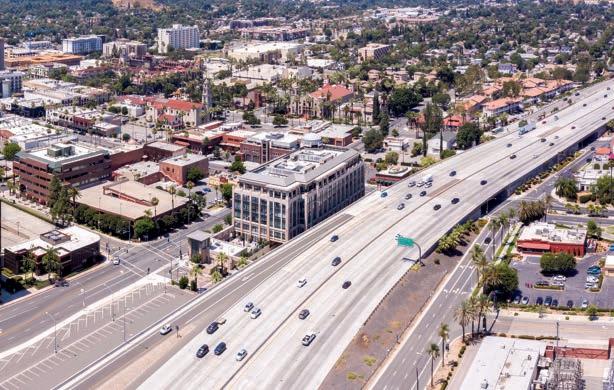
FINANCIAL SUMMARIES
BUDGET SUMMARY BY FUND
Cities Fund
FUND SUMMARY
GENERAL FUND
TOTAL REVENUES BY DEPARTMENT
TOTAL EXPENSES BY DEPARTMENT
TOTAL REVENUES AND EXPENSES BY FUND SINCE FY 18/19
TOTAL REVENUES - ALL FUNDS
TOTAL EXPENSES - ALL FUNDS
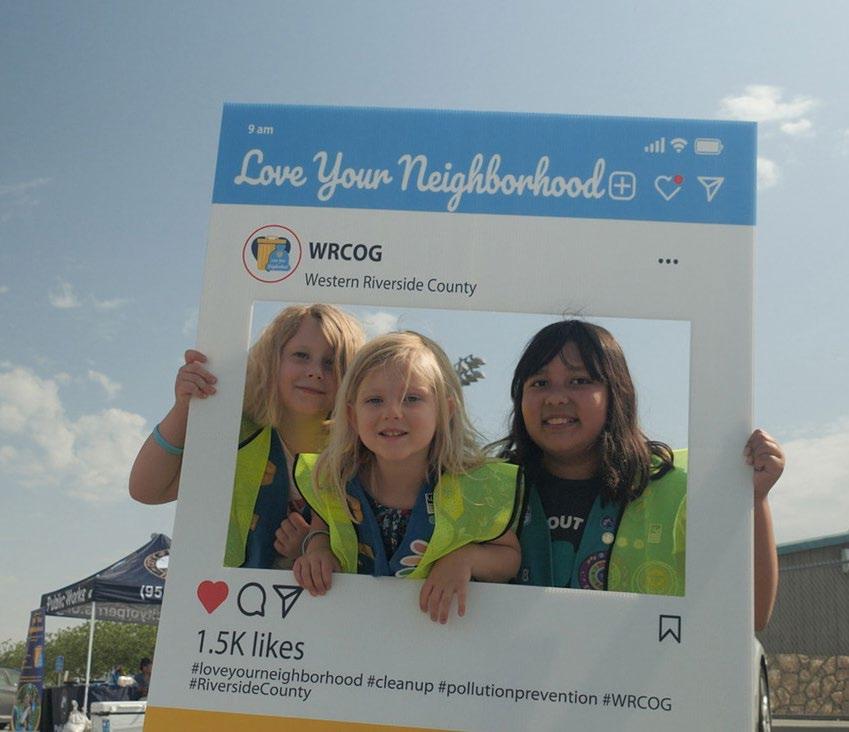
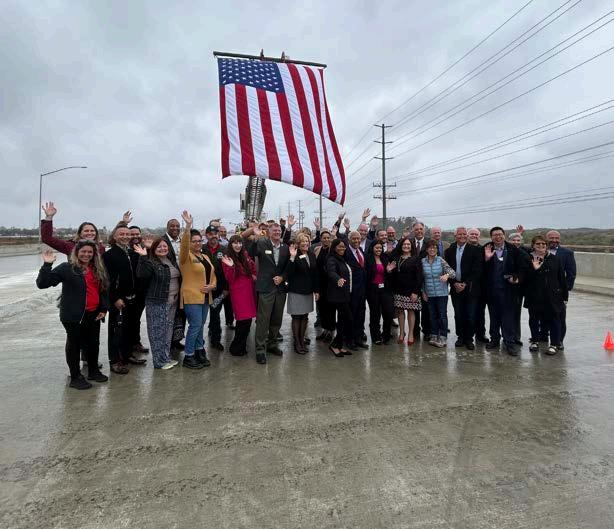
BUDGET DETAIL
BY DEPARTMENT
Transportation & Planning Department

Mission
BUDGET AT A GLANCE:
TOTAL REVENUES
$4,148,750
TOTAL EXPENDITURES $3,463,880 NET REVENUE
$684,870
TOTAL STAFF 6
The mission of the Transportation and Planning Department is to assist WRCOG member agencies with addressing key transportation and planning challenges through various programs.
Department Description
Functions of the Transportation and Planning Department are split into two divisions. The Transportation Division oversees the Transportation Uniform Mitigation Fee (TUMF) Program. The Planning Division implements the SCAG Regional Early Action Program (REAP) Subregional Partnership Program, the Grant Writing Assistance Program, Modeling (RIVCOM) Program, and supports the WRCOG Public Works Committee (PWC) and Planning Directors Committee (PDC).
Transportation Division
TUMF
The TUMF Program funds critical transportation infrastructure to accommodate the traffic created by new population growth and commercial development throughout Western Riverside County. Each of WRCOG’s member jurisdictions and the March Joint Powers Authority participate in the Program. Fee revenues collected from new development are allocated by WRCOG to the Riverside County Transportation Commission (RCTC) and member agencies so they can prioritize TUMF projects to be planned and constructed. TUMF revenues are also distributed to the Riverside Transit Agency (RTA) for transit improvements, and to the Western Riverside County Regional Conservation Authority (RCA) for the acquisition of sensitive environmental habitat. Over the 20-year period of the Program’s nexus study, TUMF will provide approximately $3 billion to improve mobility in Western Riverside County by building critically needed transportation
infrastructure. Collectively, these infrastructure improvements and mitigation projects will help to reduce congestion, create safer roadways, improve air quality, provide open space, and keep our communities moving. The types of projects funded by TUMF are transportation-related, including interchanges, bridges, grade separations, roadways, and transit facilities.
The TUMF Program is funded through fees paid by project applicants. As funds are collected by WRCOG (either directly or through a WRCOG member agency), those funds are pooled by WRCOG and distributed as follows:
• 45.7% to WRCOG member agencies,
• 45.7% to RCTC,
• 3.1% to RTA,
• 1.5% to RCA, and
• 4.0% to WRCOG for Program Administration.
The 45.7% of TUMF allocated to WRCOG’s member agencies is distributed through the 5-Year Transportation Improvement Program (TIP) process. The WRCOG subregion is grouped into five TUMF Zones, which are geographic groupings of member agencies. The five current TUMF Zones are as follows:
• Central (Menifee, Moreno Valley, Perris, and the County of Riverside),
• Hemet / San Jacinto (Hemet, San Jacinto, and the County of Riverside),
• Northwest (Corona, Eastvale, Jurupa Valley, Norco, Riverside, March JPA, and the County of Riverside),
• Pass (Banning, Beaumont, Calimesa, and the County of Riverside), and
• Southwest (Canyon Lake, Lake Elsinore, Murrieta, Temecula, Wildomar, and the County of Riverside).
Per the TUMF Administrative Plan, RCTC is responsible for the administration of TUMF funds it receives. RCTC allocates those funds to subregional TUMF projects, which are identified in the TUMF Nexus Study. Funds are remitted to RCTC monthly. The process to allocate and distribute TUMF funds between WRCOG and RCTC is governed by a Memorandum of Understanding (MOU) between the two agencies.

RTA also receives an allocation of TUMF funds which are used to fund regional transit projects, as identified in the Nexus Study. These funds are remitted to RTA on a quarterly basis. WRCOG and RTA have an MOU which sets forth the various roles and responsibilities of both parties.
RCA’s allocation of TUMF funds is also remitted on a quarterly basis and are used by RCA to purchase land in support of the Multi-Species Habitat Conservation Plan (MSHCP). WRCOG and RCA also have an MOU, similar to the other MOUs maintained with WRCOG’s partner agencies.
Planning Division
REAP Program
The REAP Subregional Partnership Program provides funding through SCAG, from the State, to assist WRCOG member agencies with various planning and implementation activities related to State housing goals and related legislation. WRCOG entered into an MOU with SCAG in 2021 which allows WRCOG to spend the funds based on a SCAGapproved work plan. A new grant from SCAG was expected to commence in FY 2023/2024. However, due to state budget reductions, this grant funding has been placed on hold, and WRCOG has not included any funding from REAP 2.0 in this budget. Activities for the REAP Program will move forward if the funding is made available from the State and SCAG.
Key elements of the work plan, if activated, will focus on direct technical support to member agencies in the form of contract planners working on a variety of housing related projects and activities, such as municipal code updates, anti-displacement policies, rezoning, and other updates to general and specific plans. In addition, WRCOG will assist with jurisdiction’s pursuit of the Pro-Housing Designation in order to enable local jurisdictions to receive priority processing or funding points when applying for several funding programs, including the Infill Infrastructure grant and the Transformative Climate Communities grant.
Grant Writing Assistance Program
The Grant Writing Assistance Program was established by the Executive Committee in 2017. The primary focus of this Program is two-fold. First, WRCOG prepares a bi-weekly summary of potential grants which are then distributed to WRCOG member agencies. If WRCOG member agencies are interested, WRCOG then engages one of WRCOG’s on-call grant writing consultants to prepare the grant application for the WRCOG member agency. If successful, the implementation of the Grant is then the responsibility of the WRCOG member agency.
Modeling (RIVCOM) Program
The Transportation & Planning Department developed, administers, and distributes the Riverside County Transportation Analysis Model (RIVCOM) model. Agencies and independent consultants can access the RIVCOM model either through executing a user agreement and user fee, or WRCOG can, upon request, provide RIVCOM analysis on a per use basis. The RIVCOM model is a complex system that analyzes road networks, socioeconomic data, driver behavior, and goods movement to predict where traffic flow will occur as the population grows and changes. While the RIVCOM model covers the entire SCAG region, the County of Riverside is the focus of analysis, and the model data is more disaggregated within the County as opposed to other areas of the region. WRCOG plans to commence a full update of the RIVCOM in FY 24/25.
PWC / PDC Support
WRCOG staff also supports the WRCOG Public Works Committee (PWC) and the WRCOG Planning Directors Committee (PDC) through research and analysis regarding key planning issues. An example of this assistance is support related to the continued development of a Program to assist with VMT mitigation. This effort is conducted in collaboration with RCTC, RTA and interested member agencies, in order to assist the agencies with the mitigation of VMT impacts from development and infrastructure projects. WRCOG will also continue with other research and analyses on demographic trends and travel behavior.
WRCOG also coordinates on a regular basis with other regional agencies such as SCAG. WRCOG provides updates on SCAG activities through regular agenda reviews of upcoming SCAG meetings. This update is distributed to elected officials in the WRCOG subregion and other key regional stakeholders. WRCOG staff also attend SCAG meetings and coordinates with SCAG to provide updates at WRCOG meetings.
Prior Year Accomplishments
Transportation Division
TUMF Program
• Collected nearly $65M in TUMF throughout April 2024 ,
• Completed updates of the 5-Year Zone Transportation Improvement Program,
• Processed 66 TUMF reimbursement invoices from member agencies associated with $18M in TUMF funding for both pre-construction and construction phases,
• Continued work on the updated TUMF Nexus Study, and
• Completed analysis of residential home size and trip generation to maintain compliance with AB 602 requirements.
• Current projects under construction by TUMF include:
o Hamner Avenue Bridge (Norco / Eastvale)
o I-215 Holland Overcrossing (Menifee)
o Perris Blvd Widening (I-215 to Case)
o I-15 / French Valley Parkway Overcrossing & Interchange (Temecula)
o SR-60 / Potrero Boulevard Interchange (Beaumont)
o Esplanade Avenue (Hemet)
o McKinley St Grade Separation & Bridge
Planning Division
REAP Program
• Completed an Affordable Housing Pipeline tool in an online GIS format, in coordination with the Housing Authority of the County of Riverside,
• Conducted follow-up support to member agencies on the Objective Design Standards Toolkit and follow-up support,
• Held regular educational legislative sessions on proposed housing bills, including presentations to the PDC and the Executive Committee, and provided a Housing Legislative Summary sheet, and
• Assisted nine jurisdictions to support the development of their Housing Elements or other housing-related planning activities.
Grant Writing Program
• Provided a bi-weekly summary of potential grants to WRCOG member agencies, and
• Prepared five grant applications on behalf of WRCOG member agencies.
GIS / Modeling Program
• Distributed updated RIVCOM model data to 15 consultants working the WRCOG subregion, and
• Completed an update of RIVCOM to address several technical issues.
PWC / PDC Support
• Facilitated monthly meetings of the PWC and PDC.
• Provided email notifications on relevant topics including grant repository updates, Housing Element assistance opportunities, demographic trends, and more.
Other Planning Division Activities
• Secured grant funding to conduct an Emergency Evacation Network Resilience study, in conjunction with the San Bernardino County Transportation Authority.
• Continued due diligence on a VMT Mitigation Program. As part of this effort, WRCOG developed a Program Manual (guidance) for a potential Regional VMT Mitigation Program.
• Researched the potential to assist member agencies with the implementation of Senate Bill (SB) 330, which aims to ensure no reduction in housing density or development potential.
• Conducted research and analysis on demographic trends and their effect on the overall growth of the subregion.
Department Strategic Work Plan
On January 12, 2022, the Executive Committee adopted a new Strategic Plan with specific Transportation & Planning Department goals and strategies including Goal 2 (Grants) and Goal 5 (Infrastructure).
The Department will work on Goal 2: Identify and help secure grants and other funding opportunities for projects and programs that benefit member agencies, through these specific strategies and actions:
Goal 2, Strategy 2.1:
Track and provide updates on regional, state, and federal grant opportunities of interest to WRCOG and its member agencies.
• WRCOG staff will continue to provide bi-weekly updates regarding grants opportunities to WRCOG member agencies.
Goal 2, Strategy 2.2:
Provide staff support and/or access to consultants for grant research and application preparation.
• WRCOG’s Grant Writing Assistance Program is directly responsive to this strategy and will continue to provide on-call consultants to assist its member agencies with grant preparation.
The Department will work on Goal 5: Develop projects and programs that improve infrastructure and sustainable development in the region.
Goal 5, Strategy 5.1:
Support investment in projects, infrastructure and programs in the region, including transportation infrastructure, water and wastewater infrastructure, and broadband / Smart Cities infrastructure. WRCOG Staff will:
• Complete key technical studies related to TUMF such as the TUMF Nexus Study. The TUMF Nexus Study will update the list of TUMF-eligible facilities and also update the fee levels based on the standard TUMF land use categories.
• Ensure timely processing of TUMF payments, reimbursement agreements, and jurisdiction reimbursement requests.
• Compile monthly TUMF revenue reports.
• Complete all programmatic TUMF documents such as the 5-year TIPs.
• Complete the TUMF Annual Report and the jurisdictional TUMF Annual Reviews.
• Provide updates on demographic trends and their effect on the overall growth of the subregion.
• Provide updates on VMT Mitigation Program efforts to member agencies.
• Complete research regarding a potential regional program to address both land use and transportation project VMT mitigation requirements.
• Provide member agencies with regular updates regarding grant opportunities and prepare grant applications that comply with the Grant Writing Assistance Program Guidelines.
• Complete and submit the LTF Work Plan.
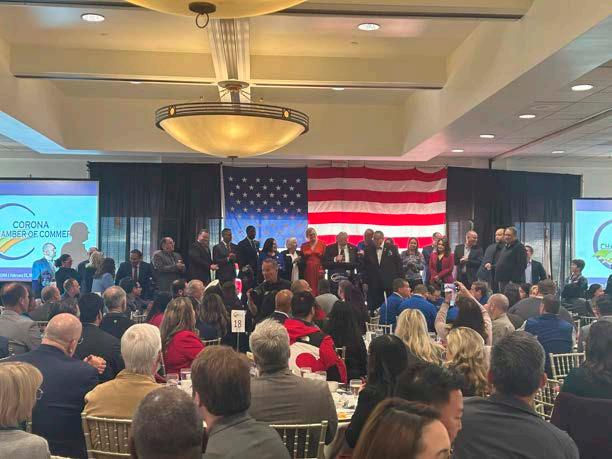
Energy & Environmental Department

BUDGET AT A GLANCE:
Mission
The mission of the Energy & Environmental Department is to assist member agencies and regional partners in the pursuit of clean, consistent, and efficient energy resources and to implement programs that support California’s greenhouse gas reduction and decarbonization goals.
Department Description
The Energy & Environmental Department has two divisions. The key programs overseen by the Energy Division include: the Inland Regional Energy Network (I-REN), the Commercial Property Assessed Clean Energy (PACE) Program (C-PACE), HERO residential PACE-financing Program, Regional Streetlights Program, and the Regional Energy Ambassador Program. The Environmental Division has three key programs to meet California’s waste diversion, recycling, and clean transportation goals: the Solid Waste and Recycling Program, the Western Riverside County Clean Cities Coalition, and the Used Oil Recycling Program.
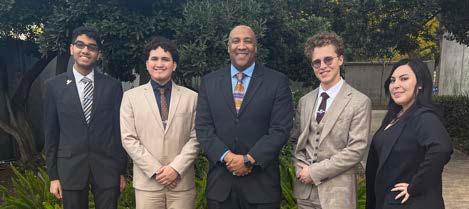
Energy Division Programs
Inland Regional Energy Network Program (I-REN)
The I-REN is a collaboration between WRCOG, the Coachella Valley Association of Governments (CVAG), and the San Bernardino Council of Governments (SBCOG). It is the mission of I-REN to actively participate in California’s Clean Energy initiatives and build a stronger clean energy economy and community. I-REN has a vision to connect residents, businesses, and local governments to a wide range of energy efficiency resources to increase energy savings and equitable access throughout Riverside and San Bernardino Counties. I-REN programs and services include three sectors: Public Sector, Codes and Standards Sector, and Workforce Education and Training Sector.
I-REN’s goals for these Sectors are: 1) build capacity and knowledge to enable local governments to effectively leverage energy efficiency services and demonstrate best practices (Public Sector), 2) work closely with local building departments and the building industry to support, train, and enable long-term streamlining of energy code compliance (Codes and Standards Sector), and 3) ensure there is a trained workforce to support and realize energy efficiency savings goals across sectors (Workforce Education and Training Sector). I-REN developed a strategic plan to memorialize these goals and to assign tasks to ensure I-REN accomplishes its objectives.
C-PACE Program
WRCOG administers a C-PACE Program throughout California. The C-PACE Program provides financing to commercial property owners to implement energy saving, renewable energy, water conservation, and seismic strengthening improvements to their businesses.
Residential PACE Program
The HERO residential PACE-financing Program previously worked with one primary partner to provide financing for a series of energy efficient home improvements. That partnership is now dissolved and WRCOG is no longer accepting new residential assessments. The existing assessments are currently scheduled to be paid off as late as the year 2046, although early payoffs are common. WRCOG continues to service the existing assessments until they are paid off and draws revenue from an annual assessment, prepayment fee, and delinquencies. The amount of revenue and expenses are expected to decrease as the number of active assessments decreases.
Regional Streetlight Program
The Regional Streetlight Program has assisted 10 member agencies and a Community Service District to purchase approximately 50,000 streetlights within their jurisdictional boundaries, which were previously owned and operated by Southern California Edison (SCE), retrofit to light-emitting diode (LED) technology to provide more economic operations (i.e., lower maintenance costs and reduced energy use), and currently manages a regional streetlight operation and maintenance (O&M) contract on behalf of participating
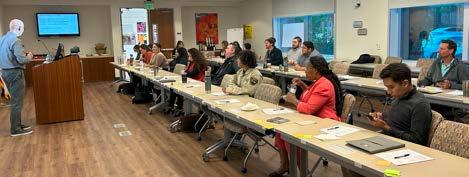
agencies. Local control of the streetlight system provides agencies with opportunities for future revenue generation such as digital-ready networks and telecommunications and information technology strategies. In 2022, WRCOG developed a Smart Streetlights Implementation Plan and Broadband Assessment to determine how best to utilize the streetlights for additional use and benefit to all WRCOG member agencies and is currently seeking funding and pilot project opportunities. The Regional Streetlight Program continues to assist participating member agencies with streetlight LED retrofits and pole tag installations, GIS mapping and streetlight inventory management, and as needed technical assistance for streetlight-related projects and needs.
Regional Energy Pathways Program
SoCalGas continues to support public sector customers that previously participated in Local Government Partnerships through the Regional Energy Pathways (REP) Program. In an effort to build on experiences and successes with the Local Government Partnership model, SoCalGas transitioned the Local Government Partnerships model into a Regional Energy Pathways program model. SoCalGas updated their approach to ensure that they are providing valuable programs and services for all Public Sector customers. The objective of this model is to maintain and allow for more flexible engagement with all public sector customers that demonstrates the value of regional partnering while maintaining the direct relationships with existing partners as well as developing new relationships with public agencies.
One aspect of the REP Program is that SoCalGas contracts with regional agencies, known as REP Ambassadors, who will serve as an extension of staff to SoCalGas’ REP team, ensuring public sector customers have a local “go-to” resource that supports their agencies’ ability to increase energy efficiency. As the REP Ambassador for Riverside and San Bernardino Counties, WRCOG will be collaborating with SoCalGas to create awareness of SoCalGas’ energy efficiency programs, assist public sector customers with developing and implementing gas energy efficiency projects through SoCalGas’ programs, provide technical assistance, and promote long term energy efficiency practices energy efficiency.
Energy Resilience Plan 2.0
The Energy Resilience Plan (ERP) 2.0 is supported by a $471,000 grant through January 2026 from the Adaptation Planning Grant Program, an initiative of the Integrated Climate Adaptation and Resiliency Program (ICARP) at the Governor’s Office of Planning and Research (OPR). The Energy Resilience Plan 2.0 will conduct feasibility studies to identify the potential to install microgrids and implement community resilience centers at member agency-owned facilities and infrastructure. The Plan seeks to enhance facility and community resilience towards climate and environmental hazards that impact power supply and cause power outages, while helping member agencies become aligned with California’s climate goals through strategic project development.
Environmental Division
Solid Waste and Recycling Program
The Solid Waste and Recycling Program assists in developing regional strategies to address waste diversion goals and reduce short-lived climate pollutants. The WRCOG Solid Waste Committee meets quarterly to discuss current and upcoming legislation related to recycling laws, hosts speakers and staff from CalRecycle to provide updates, and supports members with compliancerelated activities, including preparing annual reports on their behalf.
Western Riverside County Clean Cities Coalition
The Clean Cities Coalition aims to reduce petroleum use in the transportation sector through the integration of advanced alternative technologies including zero-emission vehicles (ZEV) and alternative fuel infrastructure deployment. The Coalition accomplishes this through engagement and outreach, partnership building, technical support, and seeking funding and other resources. The Coalition periodically partners with member agencies, adjacent coalitions, and transportation industry stakeholders to provide trainings for technicians and first responders, and it helps member agencies navigate new and expanding federal and state policies around zero-emission vehicle adoption.
Used Oil Recycling Program
The Used Oil Recycling Program is designed to promote the proper recycling and disposal of used motor oil and used oil filters. WRCOG staff host events across the subregion, promoting the proper use of contaminated used oil, and to provide a venue for community members to recycle their used oil properly. WRCOG also supports members with compliance-related activities including preparing annual reports on their behalf.
Prior Year Accomplishments for FY 2023/2024
Energy Division
I-REN Program
Public Sector
• Launched the IREN.gov website.
• Completed 28 orientation meetings with I-REN member agencies
• Developed and launched the Building Upgrade Concierge (BUC) software tool
• Began requesting utility data for member agencies
• Benchmarked 25 facilities, performed 2 site visits, conducted 2 energy audits
• Developed Energy Resilience Roadmaps and presented to 11 member agencies
• Developed incentive structure to encourage and offset costs of energy efficiency projects
• Developed 2024-2027 I-REN Strategic Plan to ensure objectives are met.
Codes & Standards
• 77 public and private sector building professionals surveyed
• 13 trainings held
• 64 net individual attendees
• 37 jurisdictions and 9 private sector building entities attended trainings as well as CPUC staff
• 99% satisfaction rating from participants
• Identified key areas for greater support needed by jurisdictions
• Supported Reach Code activities in Palm Springs
• Launch of “Ask an Energy Code Question” on I-REN website
Workforce Education & Training
• Established partnerships with regional organizations:
• Science and Technology Education Partnership Conference
• Inland Empire/Desert Regional Consortium (IEDRC)
• Participated in regional workforce events
• Solicited proposals for workforce assessment provider
• 11 I-REN Energy Fellows placed at member agencies
• 17 job fairs attended
• 400+ job seeker leads collected
• 50 potential partners identified
• 20 community partner meetings
• California Climate and Energy Collaborative (CCEC) Forum participation
C-PACE Program
• Provided nearly $38.8M in financing for three C-PACE projects.
• Prepare monthly C-PACE closed project reports.
Residential PACE Program
• PACE Programs implemented an Escheatment procedure to timely process and provide a final notification to property owners of unclaimed refunds before escheating to the State where the funds will be kept for ongoing tracking and claiming.
• The PACE programs also supported the implementation of the State’s California Mortgage Relief Program, a program intended to support property owners that were impacted by COVID-19. WRCOG supported connecting 22 property owners with these resources that amount to nearly $500,000 in support to pay-down or pay-off existing PACE assessment.
• Implement annual Escheatment procedure for unclaimed PACE refunds.
• Prepare and submit annual CAETFA report for PACE activities.
• Track, monitor and prepare annual report on PACE delinquencies.
Other Energy Division Activities
• Completed the Energy Resilience Plan which serves as a resource for developing and implementing energy resilience solutions to mitigate power outage impacts for member-owned facilities in the subregion. The Plan has two main elements:
o Identify and prioritize critical facilities, and
o Designing for energy resilience.
• Three facilities studied in this Plan include the Banning Wastewater Treatment Plant, the Jurupa Valley Fire Stations, and the Kay Ceniceros Senior Center in Menifee.
• Developed and submitted a grant application to the Governor’s Office of Planning and Research’s ICARP Adaptation Planning Grant Program to conduct up to 10 additional microgrid feasibility studies in the subregion.
Environmental Division
Solid Waste and Recycling Program
• Developed AB 939 Electronic Annual Reports and SB 1383 reports on behalf of 12 member agencies.
• Retained a consultant to develop organics and food capacity planning to fulfill SB 1383 requirements on behalf of 12 member agencies.
• Secured a multi-year partnership with Riverside County Water Protection for the Love Your Neighborhood Program and developed a website.
• Hosted 16 Love Your Neighborhood events in partnership with Riverside County Flood Control and Water Conservation District.
• Developed and submitted a grant application for the U.S. Environmental Protection Agency Recycling Education and Outreach solicitation.
• Developed and issued a Request for Proposals to obtain a consultant to implement a regional food rescue program and Tier 1 & 2 food waste generator inspections for SB 1383 compliance.
Western Riverside County Clean Cities Coalition
• Supported Clean Cities Coalition members in achieving a petroleum reduction of nearly six million gasoline gallon equivalents and more than 18 tons of greenhouse gas emissions through fleet operations and sales of fuel to consumers.
• Hosted the annual SoCal Alt Car Expo, engaging more than 60 local jurisdictions, fleet managers, and other important clean transportation industry stakeholders around policy, funding, and other clean mobility related topics.
• Developed, submitted, and won multiple grant applications for clean transportation and equity projects, including:
o Clean Mobility Options Voucher funding for deployment of zero-emission car share vehicles - $1.5M.
o Funding to conduct a Local Project Advisory Group in support of the Houston to Los Angeles (H2LA) Interstate 10 Corridor Project - $30,000.
o Funding to establish the Inland Zero-Emission Vehicle Network to facilitate partnership building and resource sharing among ZEV stakeholder - $20,000
• Implemented a local Clean Cities Energy and Environmental Justice Initiative program, facilitating feedback from community members on mobility challenges and highlighting resources and strategies to address then with zero-emission solutions.
• Supported multiple local jurisdictions with planning for deployment of zero-emission vehicle infrastructure for both fleets and the community.
• Participated in multiple training courses focused on engaging energy and environmental justice communities around mobility challenges and clean mobility projects.
• Engaged nearly 20 new clean mobility industry partners, community organizations, and other important stakeholders, resulting in new partnership opportunities related to clean mobility and air quality.
Used Oil Recycling Program
• Hosted 28 virtual Used Oil events and exchanged a total of 2000 used oil filters across Western Riverside County.
• The Used Oil Recycling Program advertising campaign reached 1,065,854 social media users.
• Staff continued to work with EcoHero to provide quality in-school presentations to 5,313 students in the subregion on protecting the environment from dumping used oil and illegal dumping.
Department Strategic Work Plan
On January 12, 2022, the Executive Committee adopted a new Strategic Plan. The Energy & Environmental Department will assist with efforts to address Goal 5 (Infrastructure) and Goal 6 (Resilience).
Goal 5, Strategy 5.1:
Support investment in projects, infrastructure and programs in the region including: (1) Transportation infrastructure, (2) Water and wastewater infrastructure, and (3) Broadband / Smart Cities infrastructure.
• Track, monitor, and share information on smart city / broadband projects and technologies that meet WRCOG member needs.
• Track, monitor, share information, and assist WRCOG members with securing smart city / broadband funding opportunities.
• Track, monitor, and share information on funding opportunities to conduct energy resilience planning activities.
• Support WRCO G members with increasing participation in energy efficiency in public facilities.
• Support WRCO G members with incorporating energy efficiency into policies and practices to modify the organization’s decision-making process.
Goal 5, Strategy 5.3:
Continue collaboration with regional agencies to address pollution control, stormwater runoff, and other environmental concerns.
• Collaborate on a minimum of six events per year in the subregion and work with the Riverside County Flood Control and Water Conservation District and Coachella Valley Association of Governments
Goal 6, Strategy 6.1:
Incentivize programs for saving electricity, water, and other essential resources through the I-REN.
• Develop I-REN program manuals for the Public Sector and Workforce, Education & Training Programs.
• Utilize the Building Upgrade Concierge (BUC) platform to provide an online dashboard and information-sharing portal
• Produce Energy Resilience Roadmaps for agencies
• Schedule and conduct BUC Trainings for each agency
• Coordinate Energy Audits with agencies
• Work with agencies to determine projects to move forward with
• Deploy “Cash for Kilowatts” incentives for completed agency projects
• Identify and leverage funding sources for energy efficiency improvements on public facilities.
• Grow I-REN Energy Fellowship Program.
• Conduct follow-up onboarding meetings and begin site assessments and audits to identify Public Sector energy efficiency projects for implementation.
• Implement I-REN Brand, Marketing & Communications guides and strategies.
• Support existing Workforce and Codes & Standards trainings across I-REN service territory.
• Develop Energy certification and accreditation programs for member agency staff and/or members of the community.
• Coordinate and Implement University / Community College Outreach Plan
• Develop/implement I-REN wide social media plan
• Develop Energy focused Workforce Assessment, Gap Analysis and program recommendations
• Create sector specific I-REN Working Groups
• Support member agency participation in California’s energy efficiency landscape.
• Actively participate in State regulatory meetings and proceedings
• Incorporate all WRCOG members into the Energy Resilience Plan prioritization matrix.
Goal 6, Strategy 6.2: Supporting efforts to promote the Clean Cities Coalition.
• Host the Annual Alt Car Expo.
• Host regular meetings of the Inland Zero-Emission Vehicle Network.
• Conduct agency and community engagement in support of the Clean Mobility Options program grant award.
• Facilitate periodic meetings of the H2LA Local Project Advisory Group.
• Manage overall activities and conduct community engagement in support of the CARB Advanced Technology Demonstration Pilot Program funding.
• Update the Coalition 5-year strategic plan for Coalition activities that ensures the Coalition activities remain effective and relevant.
• Increase mobility-related outreach and engagement of Energy and Environmental Justice communities by directly engaging community members and community organizations.
• Conduct regular engagement with Coalition members and stakeholders to assess the need and opportunity for partnership building and resource sharing.
• Regularly seek funding and other resources to enable deployment of clean and resilient transportation and zero-emission vehicle infrastructure.
• Assist members as appropriate with region-wide zero emission vehicle transition planning including building partnerships with adjacent regions.
• Submit quarterly fuel price reports, quarterly progress reports, and the annual Clean Cities Program Report to Department of Energy.
Goal 6, Strategy 6.3: Continuing to support the Solid Waste and Recycling Program.
• Submittal of annual Used Oil compliance report.
• Conduct annual solid waste rate survey.
• Prepare and submit AB 939 compliance reports on behalf of member agencies.
• Host a minimum of 24 used oil events throughout Western Riverside County.
• Develop resources for member cities to meet SB 1383 compliance requirements.
• Host quarterly Love Your Neighborhood events throughout the Western Riverside County.
Administrative Services Department

BUDGET AT A GLANCE:
TOTAL REVENUES
TOTAL EXPENDITURES
$1,841,774
$1,841,455
COST $320
STAFF 4
Mission
The mission of the Administrative Services Department is to provide administrative and technical support to the WRCOG organization, staff, and member agencies.
Department Description
The Administration Department has two main roles at WRCOG. First, the Administration Department houses the WRCOG Executive Director who oversees WRCOG’s Programs and staff based on direction from the WRCOG Executive Committee. Second, the Administration Department is responsible for supporting various WRCOG Departments including Energy & Environment, Finance, and Transportation & Planning. Key functions include human resources, information technology, compliance, safety, facilities management, and coordination of WRCOG committee’s activities.
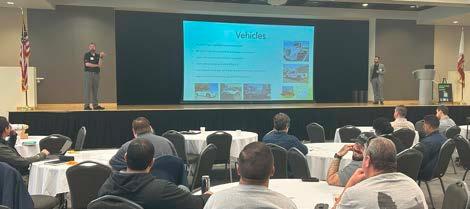
Prior Year Accomplishments
1. Continued development of standardized processes for general operations in human resources, facilities management, procurement, information technology, and training.
2. Implemented an online employee driven benefits program.
3. Created a new training por tal for staff to provide standardized training, offering a multifaceted approach including career and professional development opportunities.
4. Implemented cloud migration for flexibility and reliability, increase performance, and lower IT costs.
5. Completed Round 7 of the Fellowship Program.
6. Implemented training and development initiatives to foster continuous growth, equip employees with essential skills, knowledge and tools to ensure our workforce remains dynamic.
7. Prioritization of employee well-being engagement to cultivate a sense of unity and increase morale and productivity.
8. Strengthen our commitment to diverse, equity, and inclusion, creating a culture where every voice is valued and heard.
Department Strategic Work Plan
On January 12, 2022, the Executive Committee adopted a new Strategic Plan with specific Administration Services Department (ASD) goals and strategies.
Administrative Services
The ASD is tasked with addressing Goal 7: Provide a safe, inclusive environment that values employees. Within this goal, there are four specific strategies discussed below.
Goal 7, Strategy 7.1:
Develop and implement organization-wide succession planning.
• Succession planning is key in preparing for the loss of critical personnel. Government agencies are particularly impacted in this area because of the institutional knowledge that is lost when an employee separates from WRCOG service. The succession planning strategy is aimed at building a pipeline of future leaders by investing in the training and development of high-potential employees. We created cross functional teams to streamline processes and improve efficiency by breaking down organizational barriers and facilitating communication and coordination across departments. This enables faster decision-making, reduces duplication of efforts, which promotes transparency and innovation.
Goal 7, Strategy 7.2:
Support employee training, enrichment, and recognition, including team-building opportunities.
• WRCOG continues to support an employee-led Good Vibes Team. The Team assists in the development of enriched teambuilding strategies that foster well-being and improve morale.
• Training programs are essential to improve the culture of WRCOG and enhance employee performance. WRCOG will continue implementing training programs that will enable employees to be prepared for technological changes and facilitate career development.
Additional activities that further the Strategic Plan include the following:
1. Implement a secure, electronic platform for WRCOG documents.
2. Work to implement process improvements to strengthen internal control areas.
3. Implement training to streamline WRCOG’s processes
4. Update WRCOG’s policies and procedures.
5. Develop onboarding and orientation program for new staff.
Finance Department

Mission
BUDGET AT A GLANCE:
The mission of the Finance Department is to carry out the policies established by the Executive Committee; provide financial support to the WRCOG organization and member agencies; and to safeguard and facilitate the use of resources for strategic financial planning.
Department Description
The Finance Department oversees and administers the financial affairs of WRCOG and provides effective and efficient management of the Agency’s financial affairs. The Finance Department manages the accounting, budgeting, and the investment functions of the Agency. The Department also provides financial information to its various stakeholders to support departments and other decision makers.
Prior Year Accomplishments
1. Received an unmodified opinion in the FY 2022/2023 annual audit and the 10th consecutive GFOA award for the Annual Comprehensive Financial Report.
2. Continued revising accounting policies and procedures (Strategic Goal 3.1).
3. Released a Request for Proposal (RFP) for new accounting software.
4. New financial reports were created for various stakeholders (Strategic Goal 3.3).
5. Developed process to vet fiscal impacts and potential risks from new Programs (Strategic Goal 3.2)
6. Continued to improve various processes, including streamlining of the accounts payable process through DocuSign, specific programmatic procedures as they relate to fiscal, and implemented an internal budget amendment approval process that resulted in operational efficiencies Agency-wide.
7. Continued implementing recommendations from internal control risk assessment.
Department Strategic Work Plan
On January 12, 2022, the Executive Committee adopted a new Strategic Plan with specific Administration Department goals and strategies.
Finance
The Finance Division is tasked with addressing Goal 3: Ensure fiscal solvency and stability of the Western Riverside Council of Governments. Within this Goal, there are three specific strategies discussed below.
Goal 3, Strategy 3.1:
Maintain sound, responsible fiscal policies.
• In order to maintain sound and responsible fiscal policies, staff have begun revise its existing policies (accounting, investment, purchasing, etc.). This process has started with a review of WRCOG’s Investment Policy and the creation of a new credit card policy. During the past year, staff identified key participants to ensure the new policies are thoroughly vetted, including its auditors, an external consultant, and other Finance Directors from WRCOG’s subregion. Staff will continue to work on revising its existing policies and also explore / create new fiscal policies, such as a reserve, pension funding, and budget policy.
Goal 3, Strategy 3.2:
Develop a process to vet fiscal impact(s) and potential risk(s) for all new programs and projects.
• The WRCOG Executive Committee approved the Guidelines and Framework for New Programs and Initiatives, designed to assess the advantages and disadvantages of potential new efforts through a twenty-criteria evaluation by WRCOG Staff.
Goal 3, Strategy 3.3:
Provide detailed financial statements for public review online.
• Staff have revised the monthly financial statements to include significantly more detail than previously provided. These revised financial statements include program-level financials, fund level financials, as well as various graphs and charts. Additionally, staff have provided quarterly updates to WRCOG’s various committees on any internal budget adjustments. Staff are also publishing these various items on WRCOG’s website. Throughout the process, staff have received input from various committee members and adjusted the reporting format based on this input.
Last year, additional activities that further the Strategic Plan were also identified:
1. Streamline the month end close process. Over the past year, the Finance Department has become significantly more consistent with its month end close and producing budget to actual reports for internal and external review. These reports are not only being produced in a timely manner, but they are also more accurate.
2. Review accounting System. Staff previously met with nearly all finance directors in the subregion, collaborated with CSMFO members, and reviewed the Agency’s existing financial software solutions to explore potentially upgrading / consolidating all systems into one. At this time, an RFP has been released and staff anticipates to begin work on a new accounting system in Fiscal Year 2024/2025.
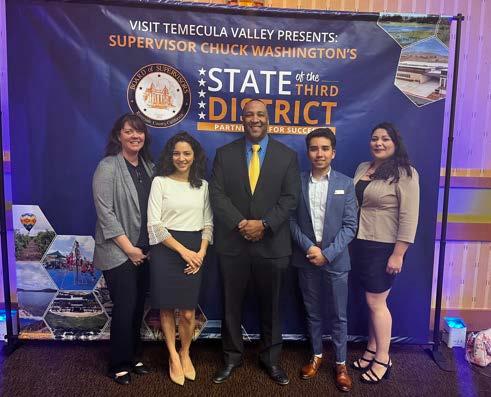
A RESOLUTION OF THE GENERAL ASSEMBLY OF THE WESTERN RIVERSIDE COUNCIL OF GOVERNMENTS ADOPTING THE FISCAL YEAR 2024/2025 AGENCY BUDGET
WHEREAS, the Western Riverside Council of Governments (WRCOG) is a joint powers authority consisting of the County of Riverside and 18 cities, the Eastern Municipal Water District, the Western Municipal Water District, and the Riverside County Superintendent of Schools, situated in western Riverside County; and
WHEREAS, WRCOG operates on a fiscal year basis, beginning on July 1 of each year and continuing until June 30 of the succeeding year; and
WHEREAS, Article III, Section 3.3 of the WRCOG Joint Powers Agreement states that prior to July 1 of each year, the General Assembly shall adopt a final budget for the expenditures of WRCOG during the following fiscal year; and
WHEREAS, Article III, Section 6, Subdivision (A) of the WRCOG Bylaws states that the Executive Committee of WRCOG shall prepare and recommend to the General Assembly a yearly budget for funds and distribution and to determine the estimated share of contributions from each member agency; and
WHEREAS, on April 1, 2024, a proposed Agency Budget for Fiscal Year 2024/2025 was presented to the Executive Committee, and the Executive Committee recommended the proposed Agency Budget for Fiscal Year 2024/2025 to the General Assembly; and
WHEREAS, WRCOG serves as the administrative lead for the Inland Regional Energy Network (I-REN) and incorporates the I-REN Budget in the WRCOG budget; and
WHEREAS, the I-REN has a governing body consisting of elected officials from throughout the I-REN service area, including WRCOG; and
WHEREAS, the I-REN revenues are fixed, approved, and provided exclusively through the California Public Utilities Commission (CPUC); and
WHEREAS, the categories and amounts of I-REN spending are constrained by the WRCOGapproved I-REN Business Plan; and
WHEREAS, the CPUC allocates I-REN funding based on a calendar year rather than the WRCOG fiscal year; and
WHEREAS, WRCOG provided the public with proper notice that the meeting to approve the proposed Agency Budget for Fiscal Year 2024/2025 is to be held on June 20, 2024, at the General Assembly meeting; and
WHEREAS, on June 20, 2024, the proposed Agency Budget for Fiscal Year 2023/2024 was presented to the General Assembly and the General Assembly held a public hearing on the proposed Budget.
NOW THEREFORE, BE IT RESOLVED by the General Assembly of the Western Riverside Council of Governments as follows:
Section 1. RECITALS
The above recitals are incorporated herein by this reference.
Section 2. BUDGET
(a) The General Assembly hereby approves and adopts the WRCOG Fiscal Year 2024/2025 Agency Budget with expenditure appropriations of $19,815,397.
(b) The continuation of Fiscal Year 2023/2024 appropriations to Fiscal Year 2024/2025 is authorized for the completion of programs and activities currently underway.
Section 3. INLAND REGIONAL ENERGY NETWORK (I-REN)
(a) The General Assembly hereby directs the WRCOG Executive Committee to monitor the finances of the I-REN and provides for:
(1) Expanded budget authority to impose new fiscal requirements on the I-REN Executive Committee as it deems necessary; and
(2) Make mid-year budget adjustments in any amount, provided they meet the following criteria:
a) consistent with the intent and purpose of I-REN
b) revenue assumptions are consistent with CPUC allocations
c) expenditures are consistent with the WRCOG-approved I-REN Business Plan
(b) The General Assembly hereby provides the I-REN Executive Committee with limited delegated authority to approve and amend the I-REN budget subject to the following conditions:
(1) Revenues shall be consistent with the CPUC funds allocation.
(2) Expenditures shall be consistent with the WRCOG-approved I-REN Business Plan.
(3) The WRCOG Executive Committee may impose additional constraints at its sole discretion.
(4) The WRCOG Executive Committee reserves the right to revoke this limited delegation of authority.
Section 4. AMENDING THE FINAL BUDGET
(a) In accordance with Sections 4.1 and 1.2.2, Subdivision (f) of the WRCOG Joint Powers Agreement and Government Code Section 29092, the General Assembly hereby delegates its power to amend the WRCOG Fiscal Year 2024/2025 Agency Budget and approve Budget transfers throughout the Fiscal Year to the Executive Director within the following control levels:
(1) Level of Budgetary Control: Budgetary control is established at the following levels: a) General Fund – Depar tment Level, and b) Other Funds – Fund level.
(b) The Executive Director is authorized to establish and amend revenue estimates and expenditure appropriations subject to the receipt or award of corresponding revenues (i.e., grant funding, donations, contract or bond revenues, and reimbursements).
(c) The Executive Director may revise the schedule of any appropriation made in this Resolution where the revision is of a technical nature, is consistent with the intent of the governing board, and provided that any net increase in expenditures is paired with a corresponding revenue increase. Notice of any revisions shall be included in subsequent budget updates to the Executive Committee.
(d) The Executive Director is authorized to adjust classifications, including salary and benefit, and allocation adjustments, and to make related inter-fund transfers and appropriation adjustments, to ensure comparability with similar classifications to maintain equity in WRCOG’s salary schedules and to incorporate changes into the Salary Schedule, as appropriate.
Section 5. IMPLEMENTATION OF ANNUAL BUDGET
The Executive Director is hereby authorized to take necessary and appropriate actions to carry out the purpose and intent of this resolution.
PASSED AND ADOPTED by the General Assembly of the Western Riverside Council of Governments on June 20, 2024.
Chris Barajas, Chair
WRCOG Executive Committee
Approved as to form:
Steven DeBaun WRCOG Legal Counsel
Dr. Kurt Wilson, Secretary
WRCOG Executive Committee
AYES: _______ NAYS: _______ ABSENT: _______ ABSTAIN: _______
Western Riverside Council of Governments
3090 University Ave, Suite 200
Riverside, CA 92501
(951)405-6700
www.wrcog.us
